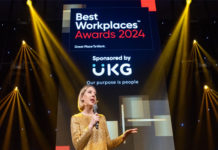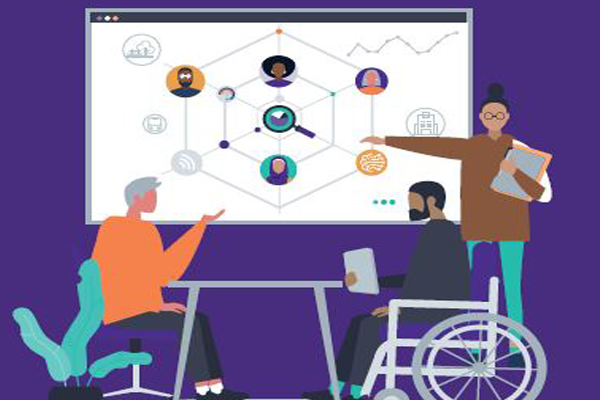Tracking diversity and inclusion (D&I) progress is one of the biggest challenges that HR is grappling with right now, confirmed a new study.
Research from data analytics platform TrueCue has identified the top HR challenges that businesses are currently facing; as they attempt to navigate the post-Covid return to work. Its latest report found that 73% of HR professionals find tracking progress towards D&I goals challenging.
The second biggest challenge for HR is understanding formal and informal employee networks in a remote/hybrid working environment (for 67%); followed by 64% who find it hard to stay on top of employee sentiment in remote/hybrid work environments. Other challenges include looking after top talent (61%); understanding retention (54%) and workforce composition (52%); amongst others (see chart below).
TRACKING DIVERSITY & INCLUSION PROGRESS
In terms of specific HR and organisational challenges, “what is clear from the majority of respondents in our survey is that for many of today’s HR professionals, tracking their progress towards vital D&I goals is a significant challenge,“ stated TrueCue’s Analytics Lead Darshan Baskaran. ”With many businesses setting themselves ambitious D&I goals in 2021 and beyond; around 73% of respondents indicated that they found tracking progress towards these goals challenging. It’s crucial that you have the ability to track the success of any D&I initiatives that you are putting in place; in order to know if they are improving your progress towards your targets.”
If you want to improve D&I, it’s also “increasingly imperative that you understand the data behind your initiatives”, added Baskaran.

EMPLOYEE SENTIMENT & NETWORKS
With employees increasingly working remotely or via a hybrid mix of home and office-based work, a major challenge for HR is understanding how both formal and informal employee networks work. “67% of respondents in our survey indicated that they find understanding formal and informal employee networks in a remote/hybrid working environment challenging,” noted Baskaran. “This is where the real value of Organisational Network Analytics really comes into its own; as it helps organisations to understand how knowledge flows within and between their employee networks, identifying risks and showcasing opportunities.”
When you are working closely with teams and colleagues in an office-based environment most of the time, “it’s far easier to monitor and stay on top of employee sentiment,” explained Baskaran. “What is clear from our survey is that the majority of respondents are currently struggling to monitor and manage employee sentiment in our ‘new normal’ world of remote/hybrid work environments.”

EMPLOYEE WELLBEING PRIORITY
Many HR professionals are currently struggling “largely because managers see people less in remote/hybrid work environments. The obvious challenge for HR and the wider organisation is to be able to understand their employees when they are not around in the office all of the time”, added Baskaran. “With only a fifth (20%) of respondents indicating that they found staying on top of employee sentiment easy or straightforward, this is clearly a huge challenge for HR leaders in 2021 and beyond.”
Staff mental wellbeing, in particular, is becoming a real priority focus for businesses. There is a growing expectation (particularly in large organisations) that they have mental health awareness programmes/initiative in place. “The fact that people are working from home; and potentially working longer hours means that they are at a much higher risk of feeling isolated; as they don’t have colleagues physically nearby to talk to,” pointed out Baskaran. “So, it falls on HR to be able to track and measure and understand employee sentiment. And make sure that employee sentiment is kept as high as possible.”
Click here to download TrueCue’s White Paper on how to overcome the top HR challenges through data. Another recent report has highlighted how hybrid working could increase lack of diversity and discrimination, despite the advantages. Click here to read more.




































